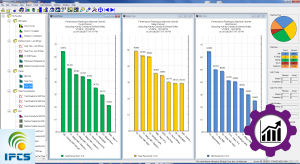AN OVERVIEW

Manufacturers always strive for greater speed and scale on the factory floor. Same time they have to sustain product quality throughout all operations. Data is now the single most important asset for manufacturing organizations. It is because of the connectedness between automation, business information, and manufacturing systems. Industry 4.0 boosts the above three that has digitalized the industry. Real-time data documenting has the ability to drive incremental growth in areas like:
Product quality—uses real-time data for statistical process control (SPC)Productivity—particularly when you get greater accuracy in your schedulingUptimeEquipment life—uses the immediate data to accurately predict maintenance and repairsCompliance and traceability—by capturing real-time data from PLC and machine-to-machine interfaces
The data’s that the manufacturing industry collects provides a significant challenge. Many organizations gather and house this data with no way of mining it for actionable insight. while some other organizations worry about the potential downtime and disruption that a large, real-time data upgrade would mean. The emergent availability of real-time data supports fast decision- making in the manufacturing environment. Real-time dashboards provide dynamic and trustworthy insight. An organization may need a quick read on its inventory to avoid running out of products on the shelf. Sometimes it requires an on-the-spot availability answer for a customer service query. In all these cases Real-time data helps.
WHAT IF HISTORICAL TREND
Lack of real-time data will delay your identification of performance lags across manufacturing operations. The operation couldn’t be corrected at the exact time of a performance issue simply means losing time and money. This may go until a historical report can show you the trend and you can act on it. In situations where traceability and compliance issues arise, similar delays can be expected. When you’re slow to see a critical equipment failure or maintenance requirement. when no available-to-promise option present to prevent the loss of a customer sale. It may cost twice as much to fix.
ANY BETTER OPTION

The process of moving toward a connected, real-time responsive manufacturing facility that can share and my data for people who work in the environment have to be considered. Even though there will be a high impact on site performance, optimizing an entire site is a disruptive and risky move.
The real-time data gathered from an automated factory can help businesses capitalize on improvements. While the short-term effort can be significant. A solution that creates the long-term ability to be agile and responsive to immediate opportunities is important. It could determine the survival of your manufacturing business
